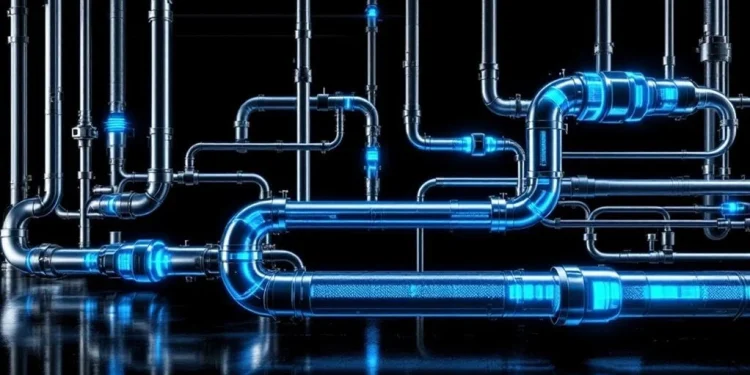A data pipeline is a series of automated steps that collect, process, and move data from multiple sources to destinations where it can be analyzed. It serves as essential infrastructure for organizations to handle large volumes of information efficiently. The pipeline includes key components like data sources, storage systems, and processing tools that work together to transform raw data into useful insights. Modern data pipelines offer both batch processing and real-time streaming capabilities.

In today’s data-driven world, a data pipeline serves as a critical infrastructure that moves and transforms raw data into useful information. It automates the collection and processing of data from multiple sources, helping organizations manage large volumes of information without becoming overwhelmed. These pipelines enable companies to turn raw data into actionable insights that can drive business decisions. The successful implementation of data pipelines can lead to competitive advantages in today’s marketplace. Security protocols ensure that data quality checks maintain data reliability throughout the pipeline operation.
Data pipelines consist of several key components working together seamlessly. The process begins with data sources, which can include databases, APIs, IoT devices, and various storage systems. Data ingestion mechanisms then pull this information either in batches or through real-time streaming. The pipeline stores this data temporarily or permanently in scalable storage systems while it undergoes processing.
Modern data pipelines seamlessly integrate diverse sources and ingestion methods, storing information efficiently while preparing it for processing and analysis.
The core function of a data pipeline involves three main steps: extract, transform, and load (ETL). During extraction, the system retrieves data from source systems like MySQL or MongoDB. The transformation stage involves cleaning, filtering, removing duplicates, and joining different data sets. Finally, the load phase moves the processed data to its destination, such as Amazon Redshift or Google BigQuery.
Workflow orchestration tools like Apache Airflow or Luigi manage these processes, guaranteeing smooth shifts between stages. These tools schedule recurring batch jobs, handle continuous streaming pipelines, and provide retry mechanisms when errors occur. They’re essential for maintaining reliable pipeline operations and preventing failures.
Modern data pipelines rely on various technologies to function effectively. ETL tools like Apache Spark handle the heavy lifting of data processing, while data warehouses and lakes provide storage solutions. Streaming platforms like Apache Kafka enable real-time data processing, and workflow schedulers automate the entire process.
Monitoring plays a crucial role in maintaining pipeline health. Systems continuously track performance metrics, detect failures, and monitor data quality. This allows organizations to quickly identify and fix problems before they impact business operations. Logging mechanisms record pipeline activities and data lineage for audit purposes.
Data pipelines support both batch processing and real-time streaming, depending on organizational needs. They can handle structured and unstructured data, making them versatile for different types of information. Through careful orchestration and monitoring, these pipelines guarantee that data flows smoothly from source to destination, maintaining its quality and reliability throughout the process.
Frequently Asked Questions
How Much Does It Cost to Build and Maintain a Data Pipeline?
Building and maintaining data pipelines typically costs $50,000-$250,000 initially for medium-scale implementations, with annual maintenance expenses ranging from 15-25% of build costs, varying by complexity and requirements.
What Security Measures Are Necessary to Protect Data During Pipeline Processing?
Essential security measures include encryption for data in transit and at rest, role-based access control, multi-factor authentication, thorough audit logging, and continuous monitoring for potential security breaches.
Can Machine Learning Models Be Integrated Into Existing Data Pipelines?
Machine learning models can be effectively integrated into existing data pipelines through orchestration tools, APIs, and frameworks like TensorFlow Extended, enabling automated processing, real-time inference, and continuous model improvement.
What Programming Skills Are Required to Develop Effective Data Pipelines?
Effective data pipeline development requires proficiency in Python, SQL, and scripting languages, along with knowledge of API integration, version control systems, and orchestration tools like Apache Airflow.
How Do You Handle Real-Time Streaming Data in Pipeline Architecture?
Real-time streaming data requires event brokers like Kafka, in-memory processing frameworks like Spark, and optimized throughput techniques including parallelism and data partitioning to guarantee continuous, low-latency data processing.


